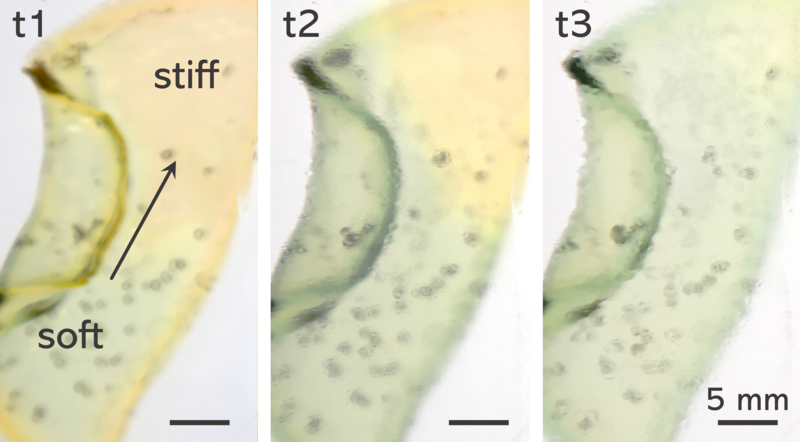Adaptive Molecular Materials

Living systems exhibit remarkable adaptivity and autonomy by continuously harnessing chemical energy from out-of-equilibrium processes.
In our research, we aim to emulate such complex dynamic behaviors by integrating molecular processes for spatiotemporal control with chemically-responsive materials. Our approach couples non-linear, oscillatory chemical reactions with responsive materials to program material structure, properties, and function in space and time. Such integration enables synthetic materials to sense chemical and physical environmental cues, transduce and amplify local signals into a global macroscopic response, and communicate with each other. Interfacing these molecular approaches with engineered living materials will allow us to design increasingly life-like synthetic systems capable of growth, adaptation, and decision-making.
